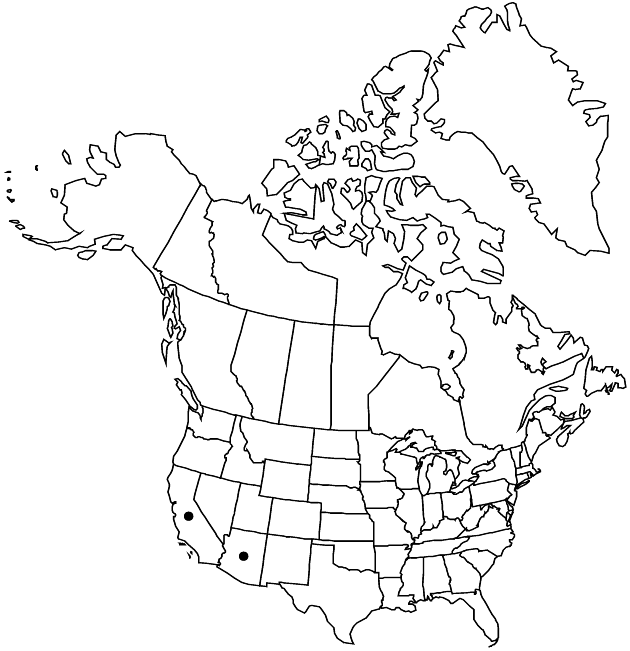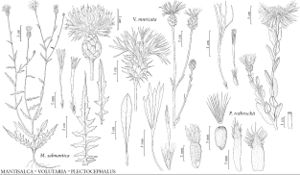Difference between revisions of "Mantisalca salmantica"
Biblioth. Universelle Rev. Suisse, pér. 5, 5: 111. 1930.
FNA>Volume Importer |
FNA>Volume Importer |
||
| Line 54: | Line 54: | ||
|publication year=1930 | |publication year=1930 | ||
|special status= | |special status= | ||
| − | |source xml=https://jpend@bitbucket.org/aafc-mbb/fna-data-curation.git/src/ | + | |source xml=https://jpend@bitbucket.org/aafc-mbb/fna-data-curation.git/src/f50eec43f223ca0e34566be0b046453a0960e173/coarse_grained_fna_xml/V19-20-21/V19_192.xml |
|tribe=Asteraceae tribe Cardueae | |tribe=Asteraceae tribe Cardueae | ||
|genus=Mantisalca | |genus=Mantisalca | ||
Revision as of 20:15, 16 December 2019
Herbage cobwebby-tomentose proximally, glabrous distally. Stems usually 1, leafless distally. Leaves: basal blades oblong, 10–25 cm, margins pinnately lobed; cauline linear to lanceolate, smaller distally, dentate to pinnately dissected. Heads long-pedunculate. Involucres ovoid, distally narrowed. Phyllaries greenish or stramineous, apically blackish, spine tips deciduous, spreading or reflexed, 1–3 mm. Corollas ± purple (rarely white). Cypselae dark brown, 3–4 mm; pappus bristles brownish white or reddish, 2–3 mm. 2n = 18 (Italy), 20 (North Africa), 22 (Europe).
Phenology: Flowering spring–early summer (May–Jun).
Habitat: Disturbed sites
Elevation: 0–1700 m
Distribution

Ariz., Calif., Europe, n Africa.
Discussion
Mantisalca salmantica is native to the Mediterranean region. It is considered an uncommon introduction into disturbed sites.
Selected References
None.
